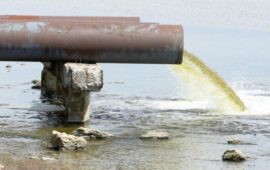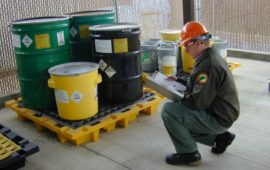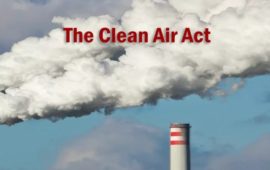The Clean Water Act is the federal Act that is responsible for the quality of water and any matter relating to pollution. If you think that your groundwater may be contaminated, it is important that you report the matter to your local Environmental Government agency. It is also a good idea to contact the Environmental …
Environmental Law
Environmental law is a law that was passed in the 1970, and is known as the National Environmental Policy Act. This law was passed along with another environmental act known as the Environmental Quality Improvement Act. The purpose of these laws was to protect the environment from public or private actions that could cause damage.
The mission of NEPA (National Environmental Policy Act) is to form policies and make assessments that are all geared towards the protection of the environment. The Act is responsible for providing the awareness and the means to eliminate danger to the environment and eco-system, and establishing goals and laws that will minimise on the risk of environmental harm.
There are a number of federal environmental statutes that make up environmental law. These are all aimed at the protection of various aspects of the environment, and include:
- The Clean Air Act
- The Clean Water Act
- The Pollution Prevention Act
- The Toxic Substances Control Act
- The National Environmental Policy Act
- The Occupational Safety and Health Act
- The Resource Conservation and Recovery Act
- The Federal Insecticide, Fungicide and Rodenticide Act
- Emergency Planning and Community Right-to-know Act
There are many statutes and regulations that come under the umbrella of environmental law, and these are all targeted at the reduction of danger to the environment and an increase in public health and awareness. These laws are usually long and complicated for anyone not usually involved in the field of environmental law. There are laws and regulations in place to cover literally every environmental issue of potential problem.
Environmental law is a combination of three things: the first is the statute that is passed through Congress. The second is the list of regulations imposed by the Environmental Protection Agency in relation to that particular statute. And the third is the legal interpretation of these regulations by the federal courts in the event of an environmental issue or problem.
Prior to the 1970 Act, studies were carried out with regards to environmental issues but there were no mechanisms in place to actually do anything about these problems. However, as the environmental issues became worse and even the public realised the dangers of failure to protect the environment it became clear that something had to be done – and this came in the form of environmental laws.
Although environmental law has made some headway towards protecting the environment against some dangers since it was introduced, there is still much room for improvement. As more complex pollutants threaten to heart our eco-system, it is likely that this law will have to be vastly improved and amended in order to continue to provide protection to the environment and to public health.
General Environmental Law Information And Resources:
What is environmental law explores the basics behind the current laws, and looks at the various areas that come under the environmental law umbrella, such as the Clean Air Act and the Clean Water Act.
Clean Water Act provides a brief background and explanation of this Act, its purpose and its history.
Clean Air Act briefly explains the basic of this Act and discusses its history and purpose within environmental law.
Resource Conservation and Recovery Act explains more about the purpose and mission of this act, its basic principles of operation, and provides various definitions of what type of pollution would come under this Act.
Environmental Response and Liability Act discusses the purpose and the importance of this Act, as well as providing basic information about the history of this Act.
I suspect my groundwater or property may be contaminated offers advice on what to do if you suspect that you groundwater may be contaminated, providing details on which authorities to contact and how to take precautions.
What kinds of claims can be brought provides definitions and details of the different types of damages that can be claimed in accordance with state common law, including nuisance, trespass, strict liability and negligence.
What kind of action can be taken by an individual for environmental harm offers advice on what you can do if you find that you life or your environment has been affected by contamination, both under federal environmental laws and under state common laws.
What must be done to force a cleanup or recover for environmental damages provides details on the actions that can be taken to force the responsible parties to either clean up a pollutes site, or cover the costs of any clean up already done or planned.
“Environmental lawyer” provides the basics on what an environmental lawyer does, how a lawyer can help you, and the importance of seeking advice from an environmental lawyer in the case of damage or injury through contamination.
Why you should hire an environmental lawyer explains what an environmental lawyer can do for you if you are seeking damages, how this can help to improve your chances of success, and why it is important to have legal advice and representation.
Environmental Response and Liability Act
In the event of contamination, a mechanism must be in place to clear the contaminated site quickly and safely. And, if there is someone responsible for this contamination then there must be a method of ensuring that person is held accountable. This is where the Environmental Response and Liability Act comes in to place. The …
Resource Conservation and Recovery Act
The mission of the Resource Conservation and Recovery Act is to provide effective regulations and means to comprehensively manage solid and hazardous waste, from generation to disposal. These regulations must be adhered to by any person or organization that deals with solid and hazardous waste, including the production, transportation, storage or disposal of the waste. …
Clean Air Act
The air that we breathe is essential to maintain life, and low quality, polluted air can pose a serious risk on both the environment and on public health. The aim of the Clean Air Act is to monitor safety levels of airborne pollutants, and to initiate regulations and controls to protect the air from dangerous …
Clean Water Act
There are a number of federal environmental statutes that make up environmental law, and these are aimed at defending and protecting particular aspects of the environment, thus also promoting public health and welfare. As the name might suggest, the Clean Water Act is dedicated to the defence and protection of the nation’s water. This act …




